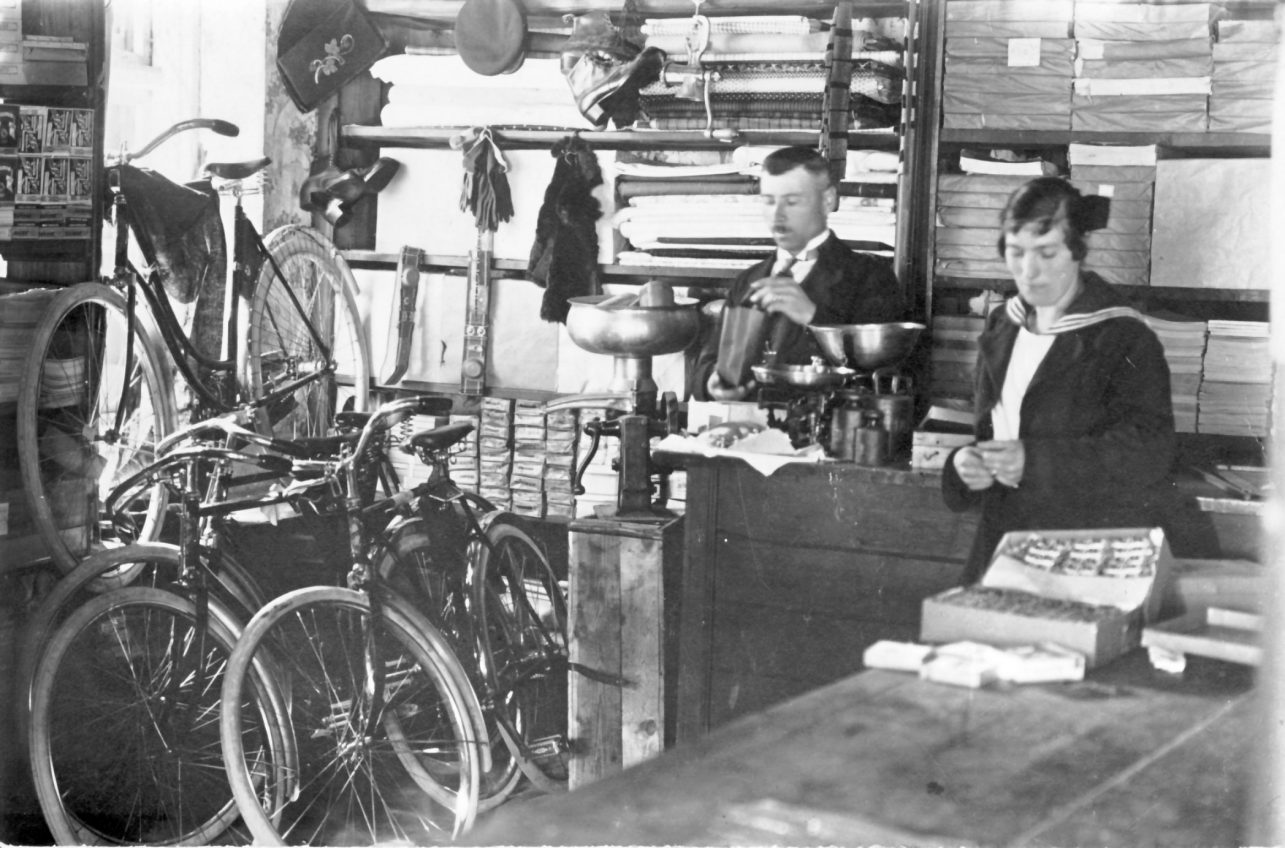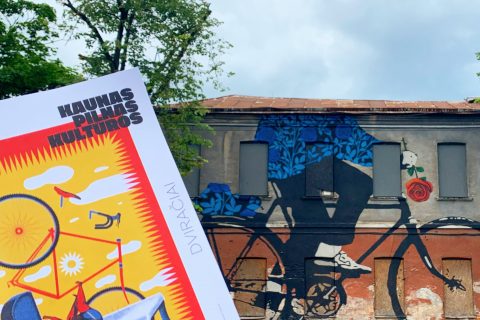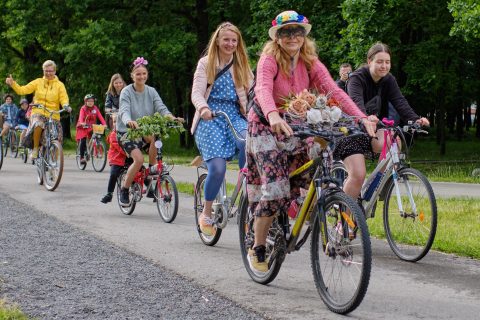When I reached Kačerginė by bicycle last summer, I was pleasantly surprised to see the outdoor photo exhibition Bicycle History in Lithuania: The First Half of the 20th Century. Although the exhibition is currently dismantled, when thinking about how to diversify the holiday readings, we contacted the owner of the photographs that were featured at the exhibition, a collector and historian Romanas Senapėdis.
An employee of the Cultural Memory and Heritage Policy Department at the Ministry of Culture, and former Lithuanian cultural attaché, gladly agreed to share not only historical shots, but also tell us what the bicycle meant in the years of the First Republic and even earlier!
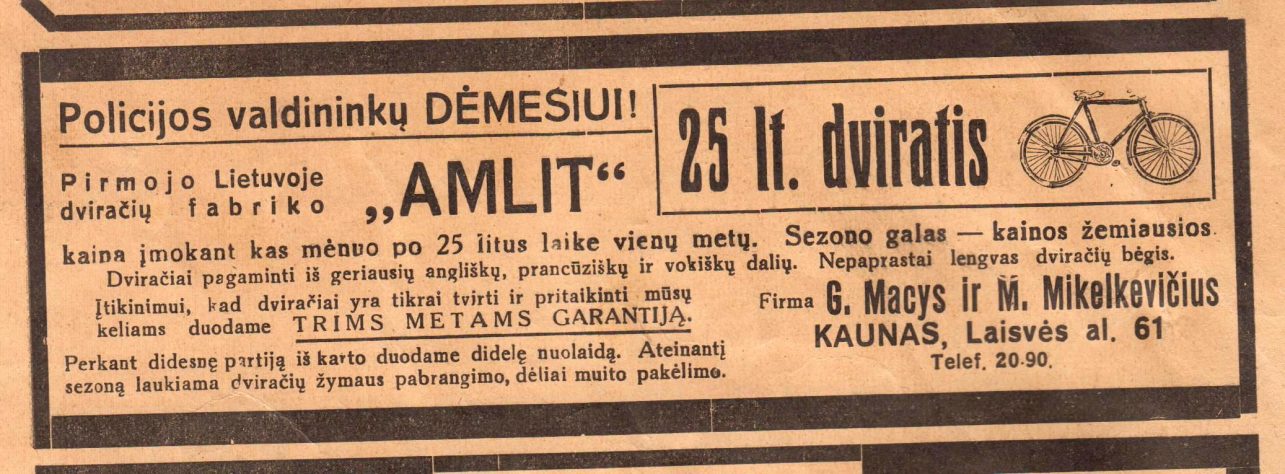
Do we know when the bicycle era began in Lithuania? What influenced it: fashion from abroad or other factors? What manufacturers dominated the market before the production started in Lithuania?
This question has long bothered many researchers of Lithuanian bicycle history. In my opinion, we should look for the beginning of the Lithuanian bicycle era in Klaipėda. Back then, Klaipėda belonged to Prussia, the technical development of which was much more advanced than that of Tsarist Russia and the rest of Lithuania that was a part of it. The first bicycle was brought to Klaipėda in 1884 by Georg Köhler, owner of a toy store. He was one of five founders of the Klaipėda Bicycle Club in 1885. The other founders were also extraordinary citizens – a teacher and three businessmen.
The Cycling Association was established in Vilnius in 1892. However, I was unable to find when a cycling club or association was established in Kaunas despite having reviewed a lot of periodicals and other sources of the time. Up until World War I, bicycles were sold and ridden in Kaunas but perhaps due to the specificity of the city – after all, Kaunas is a city with a fortress – the establishment of public organizations might have been limited. But it is only my opinion.
The emergence of bicycles in Lithuania was delayed compared to Western Europe. In Lithuania, first of all, it was the entertainment of the wealthier citizens; perhaps we could even call it a fashion. First bicycles were brought to Lithuania from Germany, England and France. However, they were also produced in the Russian Empire. In 1889 the manufacturing of Rossija began and DUX in Moscow. In theory, these bicycles could have been ridden in Lithuania before World War I.
How did the bicycle industry develop during the interwar period? Was bicycle a thing of luxury?
After the war, the bicycle park in Lithuania wasn’t large. The residents rode on imported bicycles, the German products being the most dominant. In 1928, Lithuania celebrated its first decade of independence. This jubilee year was especially significant for the history of Lithuanian bicycles. Not to mention the new cycling records in various competitions and participation in Paris and Amsterdam Olympic Games. This year has also entered the history of Lithuanian technology as the year of the emergence of the first industrial bicycle AMLIT made in Kaunas.
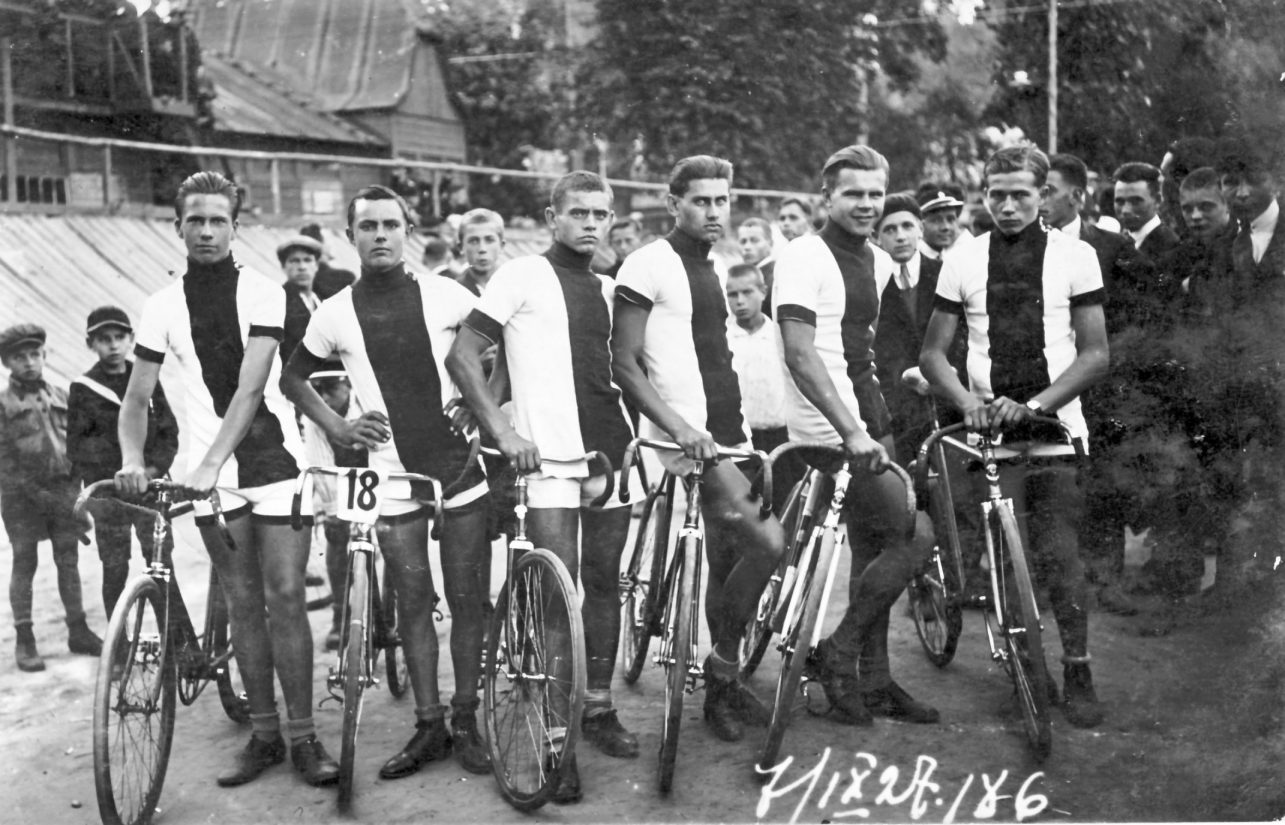
A decade later, on the 20th anniversary of the independent Republic of Lithuania, the production of the Lithuanian bicycle Bresvelo begins in Klaipėda. In the same year, the bicycle Lietūkis appeared on the Lithuanian market. Manufacturers indicated in their advertisements that they are much cheaper than imported ones and are specially adapted for Lithuanian roads. The price of the bicycle was quite high, ranging from 270 to 400 litas. Basically, you could say that the price of a bicycle was equal to the price of a cow. In the interwar period, tradesmen started allowing people to purchase bicycles with instalments. There were also a lot of ads in the press at that time about used bicycles for sale. As a result, bicycles became quite common in society, and the middle class could afford to purchase this vehicle. And the wealthier citizens moved onto motorbikes and cars. The bicycle was widely used in police, the military and sports.
with the advent of bicycles, a new type of thief has emerged: bicycle thieves.
The bicycle was also a certain attribute of pride. From the interwar photographs, we see that people would go to take pictures to the photographic studio, and the photographer would often lend his own bike to those who didn’t have one (in the photos, we can see the deflated tires and bicycle lacking a registration number). A guy, having his photo taken with a bike, could proudly sign it and give it to his girlfriend. Look, what a cool guy!
Was Kaunas, as well as other Lithuanian cities of that time, bicycle-friendly? Were there special bike paths?
Unfortunately, at the beginning of the cycling era, there were no special bike paths, and traffic on the streets was somewhat chaotic, both because of the behaviour of pedestrians who walked across the street as they liked and because of the car and motorcycle traffic. There are many reports of bicycle accidents in the interwar press. The road surface was also inadequate. For example, in 1928, the advertisement for the AMLIT bicycle read, “The front fork of the bicycle with springs fully protects against shocks, and the seat also has double springs. All that makes riding extremely easy and enjoyable because even on the worst roads, there is no jolting.”
Improving bicycles and adapting them to bad roads has been a concern of all bicycle manufacturers. In order to avoid discomfort when driving on poor roads, so-called “balloon” tires (wide and thick) were used, which softened the roughness of the road.
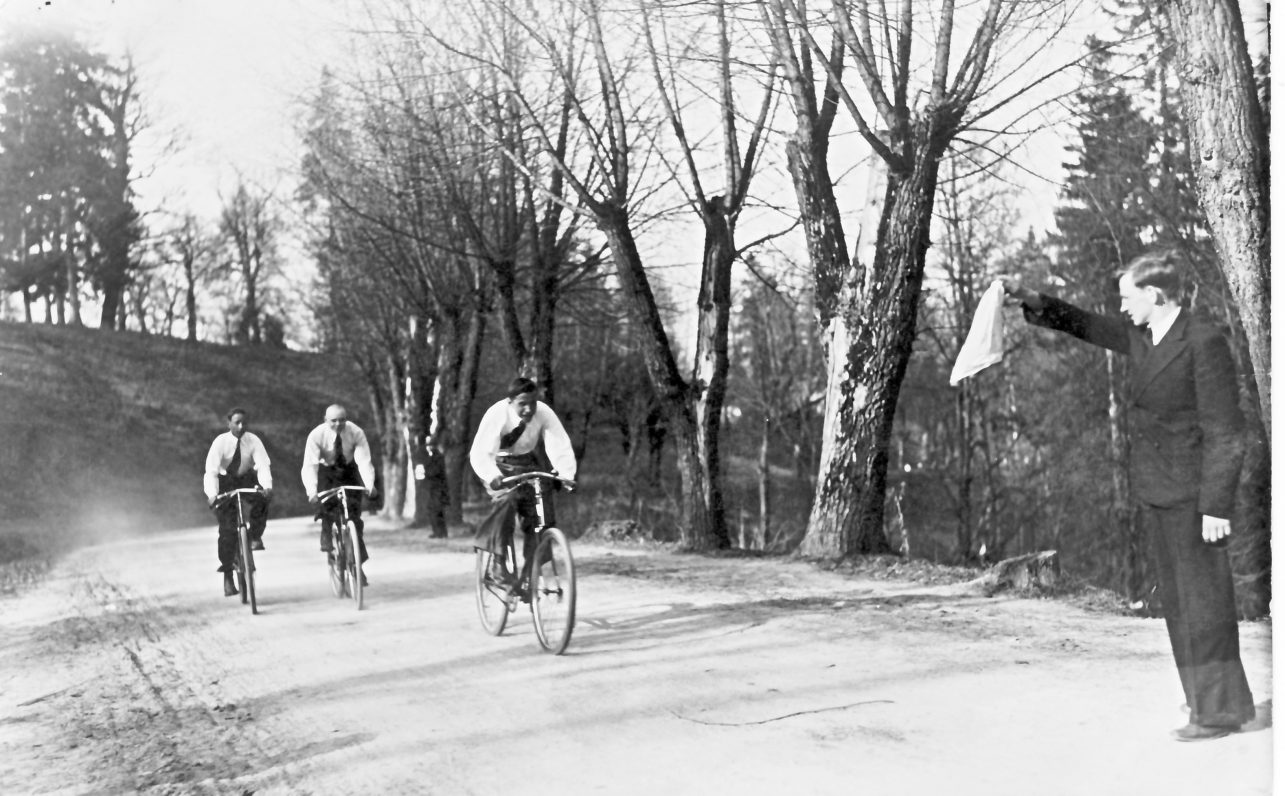
What fundamental problems do you think the “bicycalization” has solved? Did people become healthier, more mobile? Or maybe something else has changed.
First of all, the “bicycalization” contributed to the growth of the Lithuanian economy, as taxes on the sale of bicycles and their parts, as well as the tax on the repair and registration of bicycles filled both the state and municipal budgets. And finally, the production of bicycles, which started in 1928, stimulated the economic growth of the young state and created jobs.
People did become more mobile. There are many reports in the interwar press about people arriving in Kaunas from other counties or to small towns from villages on business. Young people could also travel to village festivities in more remote places. These trips are followed by different stories that often ended with lads having to return home on foot… In the interwar press, I found a number of articles explaining the health benefits of cycling, application in various military units, police, etc.
However, with the advent of bicycles, a new type of thief has emerged: bicycle thieves. In the publication Kriminalinės policijos žinios, which came out every ten days, we find a lot of interesting and valuable information about stolen bicycles. The special bike markings in their descriptions are sometimes the only source of information about the decoration of a particular model of bike (bike colour, decorative strips, nickel or chrome plating). This is especially relevant when researching Lithuanian bicycles AMLIT, Bresvelo, Lietūkis.
In the advertisements, we find information that the bicycle tires were not only black as usual but also red, grey or white, the wings or rims were nickel-plated, the ends of the frames were red. On the white plate of rims, we can find the frame number as well as the registration number and other important information (bells, locks, lighting equipment). If we put it all together, we can have an image of the “bicycle park” of pre-war Lithuania. Sometimes, certain information can only be obtained from entries in the said publication because, in reality, those items have not been seen in museums or private collections.
Another important piece of information in the reports about the stolen bikes was that almost all of them had defects: the pedal or handlebars bent, the fork broken and repaired, the frame and wings slightly bent. Rims cracked, welded, spokes missing, tires patched. All that shows that the first generation who moved from ploughshare onto a bike was not really good at riding a bike; after all, it was the adults who were learning how to ride a bike after working hard and finally saving up for a bicycle.

I should also mention the smuggling of bicycles and their parts, which flourished at the Lithuanian border. Police often detained smugglers and confiscated various goods. Magazine titled Policija contains a lot of information about confiscated goods, including a number of bicycles and their parts. The biggest smuggling operation took place on the border with Germany (Klaipeda region since 1939), as well as with Latvia. Due to the strengthened and war-ready border regime with Poland, no such smuggling has been recorded. The significant difference in the prices of many goods in Lithuania and Germany encouraged people to engage in this illegal business.
Maybe you know of some interwar celebrities who couldn’t imagine their lives without a bike?
While organizing an exhibition on the history of cycling at the manor of the President of the Republic of Lithuania Antanas Smetona in Užugiris, I tried to find out whether the President and his family knew how to ride a bicycle. Unfortunately, I did not find such information. Usually famous, deserving people had cars or motorcycles, so they did not need a bicycle as a means of transportation. I will not stop searching; I hope that I will be able to find out and discover that some pre-war Kaunas celebrity had a bicycle.
It is true that Lieutenant General J. Bulota and Major P. Ruseckas were active founders of the Lithuanian Bicycle Union, and Prof. Tadas Ivanauskas is considered a signatory of the Statute of the Lithuanian Cyclists’ Union. Prominent cultural figures were into bicycle sport. For example, on June 27–29, 1926, a bicycle race was held in Kaunas to win the cups of Kipras Petrauskas and Borisas Dauguvietis.
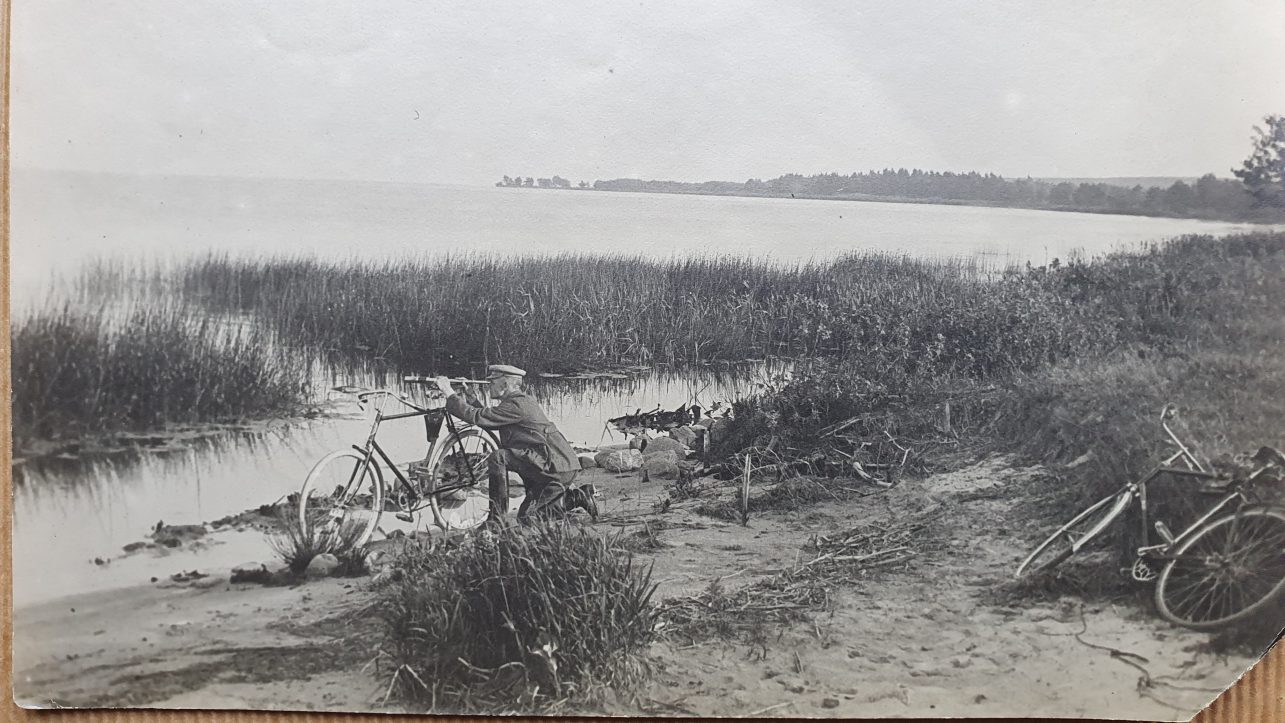
Could bicycle sport compete with, say, basketball or football in terms of popularity?
The Lithuanian Cyclists’ Union (LDS) was established on October 8, 1923. Cycling alone wasn’t enough for it, so the union also began promoting weightlifting, boxing and wrestling. It operated throughout Lithuania since, in addition to the Kaunas branch, it had established eight more in rural Lithuania and, next year, managed to join the International Cyclists’ Union.
On September 27, 1923, the founders of LDS, prof, Tadas Ivanauskas, Jurgis Šulginas, Voldemaras Gulmanas, Captain Vincas Butauskas ir Vincas Barkauskas signed a statute, which was approved by authorities and registered on October 8. K. Markevičius, Kl. Prielgauskas helped with the establishment of the LDS, and M. Barcevičius, A. Binkevičius, P. Ruseckas, K. Petrauskas, J. Vilpišauskas and others continued the work. Later LDS practised not only track and field but also basketball. Thus, cyclists were also pioneering in other sports.
This opened the door for our athletes to participate in the 8th World Olympics in Paris in 1924. Thus, the Lithuanian Sports League delegated the best cyclists of that time, J. Vilpišauskas (LDS) and I. Anolikas (Makabi) to Paris to represent Lithuania. They arrived in Paris on July 21, 1924, and began to prepare for the race. Unfortunately, the bicycles they came with were worthless. I. Anolikas bought a new Peugeot bike, and J. Vilpišauskas managed to repair his old Peugeot. 188 tiring kilometres awaited them. Our guys were not that successful. After a hundred kilometres, J. Vilpišauskas fell, and I. Anolikas’ bike broke down.
Despite this failure, our cyclists took part in the 9th Olympics in Amsterdam in 1928, only with a slightly larger group this time, which consisted of Anolikas, Murnikas, Jankauskas, Gedminas.
Among the pre-war Lithuanian cycling Olympians, only I. Anolikas can be called the first and multiple Olympian. The fate of this great cycling champion, like many other Makabi club athletes, was tragic during World War II. We remember them not only as great athletes but also as victims of the Holocaust.
